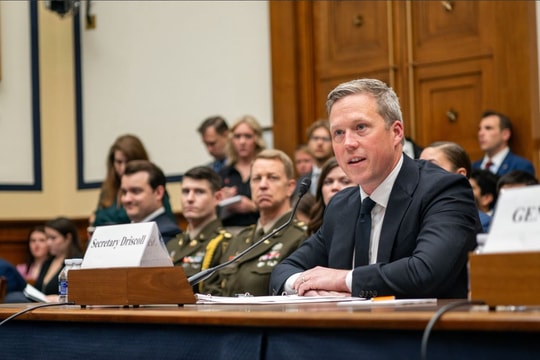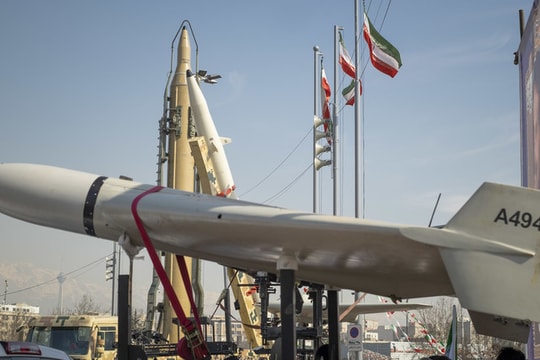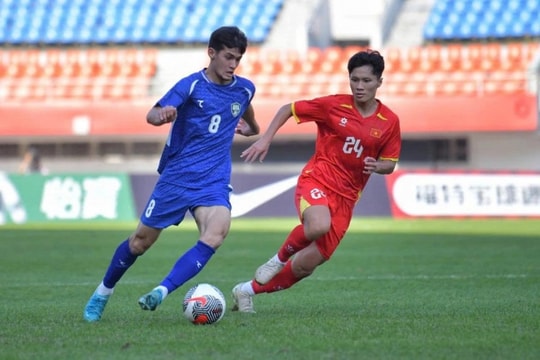A dogfight between American bombers and 17 Japanese fighters
The B-17 "666" was known as the cursed bomber, but it helped a crew of miscreants receive two of America's highest Medals of Honor.
Image of B-17 number 666 after an air battle
Originally named "Lucy," the 43rd Bombardment Squadron's B-17 bomber, serial number 666, became famous in 1943 for returning from every mission despite being riddled with wounds from enemy fire.
But with so many injuries in combat, Lucy was called "the cursed plane" and no crew wanted to take this bomber, causing it to be listed for scrapping for spare parts. But that was also when 666 entered the history of the US Air Force in World War II, according to War History.
The crew, led by Captain Jay Zeamer, was always ready for combat, but they frequently violated regulations at the US Port Moresby base in Papua New Guinea. Their lack of discipline resulted in them being placed at the bottom of the B-17 bomber duty list and having to wait for a long time for a new plane.
However, a photographer approached Zeamer and offered to take them to the ill-fated 666. Normal people refused to fly on this bomber, but Zeamer quickly accepted the challenge.
The most heavily armed B-17 in history
Plane 666 needed refurbishment before returning to combat. Each B-17 was equipped with 13 machine guns for self-defense, but Captain Zeamer decided to turn it into a fortress with 19 machine guns. All 7.62mm guns were replaced with 12.7mm guns with greater firepower and range.
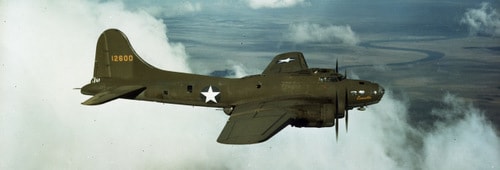 |
A B-17 in flight. Photo: Boeing. |
The crew also added a fixed gun mount, allowing them to fire from the pilot's position. They also carried several spare machine guns so that they could easily replace any jammed weapons during combat. When the refurbishment was complete, 666 became the most heavily armed B-17 in the entire Pacific theater and was nicknamed "Old 666".
On June 16, 1943, Zeamer's crew decided to volunteer for a risky mission, flying solo intothe Japanese-controlled Bougainville areatake reconnaissance photos of the surrounding terrain.
When 900 km from the target, Captain Zeamer discoveredabout 17 Japanese Mitsubishi Zero fighterstaking off. The American crew decided to continue the mission to serve the new Allied attack. The Japanese fighters began circling 666 in preparation for attack.
1 vs 17 Air Battle
As the Zero group approached, Captain Zeamer opened fire with his forward gun, shooting down at least one Zero. Japanese fighter 20mm shells then hit the cockpit and nose of the aircraft, seriously wounding Captain Zeamer and Second Lieutenant Joseph Sarnoski.
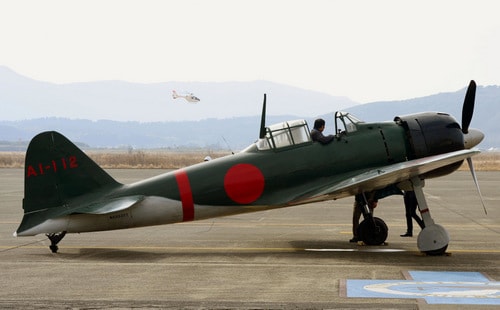 |
A restored Zero fighter. Photo: Japan Times. |
Sarnoski was ejected from the nose of the aircraft by exploding Japanese shells. He bled rapidly, but crawled back to the gun turret and shot down another Zero fighter before dying. Zeamer suffered multiple wounds to his arms and legs that bled profusely, but continued to fly the B-17.
The next wave of Japanese fighters destroyed the American bomber's oxygen supply system, forcing the crew to descend to 15,000 feet to breathe normally. The Japanese fighters continued to fire at the B-17 for the next 45 minutes. However, the American crew did not give up, shooting down at least five more Zeros before running out of fuel and having to return to base.
When the 666 returned to base in a severely damaged state, six of the nine crew members were dead or seriously injured. The technical team on the ground thought Zeamer was dead, but he woke up soon after.
After the battle, both Zeamer and Sarnoski were awarded the Medal of Honor, the US military's highest award, for their bravery in combat. The others were awarded the Distinguished Flying Cross, the second highest award after the Medal of Honor.The last 666 was returned to the US in 1944 and was scrapped shortly thereafter.
According to VNE

